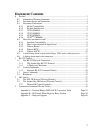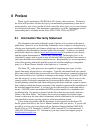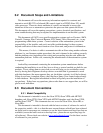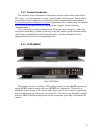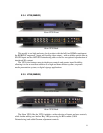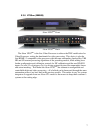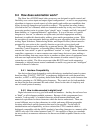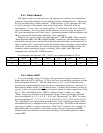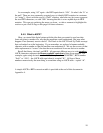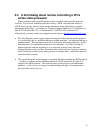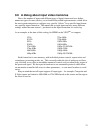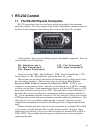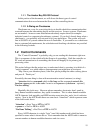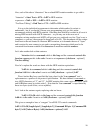0.4 How does automation work?
The iScan line of DVDO brand video processors are designed to enable control and
flexibility over various input and output signal configurations – as well as our proprietary
algorithms to improve several aspects of video quality and enable new capabilities that
legacy devices by themselves are not able to achieve. This product has many features
(covered in the User’s Manual) which are intended to make day-to-day use of our video
processing product easier in systems from “simple” up to “complex and fully integrated”
home-theaters, or “corporate/industrial” applications. It is up to the user or system’s
integrator to “turn on” or otherwise set up the unit (and select appropriate auxiliary
hardware) to enable this functionality within a given media presentation system. With
the exception of some automatic functions which are user selectable (at the time of this
writing: Input Selections, Deinterlacing Modes, and Output Profiles), the unit must be
prompted by user action to do a specific function or provide a given signal path.
This user function can be initiated by an external device, like a Home Automation
controller, Control Sequencer, or Learning/Macro-Infrared-Remote-Control. These
execute the “user action” as part of a predefined “routine” or “script”. Home Automation
controllers, sequencers, or macro-remotes can control many devices at once, making a
task like switching from one source device to another on three pieces of equipment occur
with one user input action (this also reduces the amount of remote controls a given
system has on a table). The iScan can accept either RS-232 based serial automation
commands, or infrared remote control commands to enable very precise and “intelligent”
control of the unit’s behavior.
0.4.1 Interface Compatibility
Our devices have been designed to work with industry standardized control systems
based on either “EIA232”-“RS-232C” asynchronous bidirectional serial character data
transfers, or NEC or ABT-proprietary based Infra-Red (IR) one-way serial character data
transfers operating at a 38.38kHz carrier frequency. The control sets for both methods
are based on the same command IDs and control values for the sake of simplicity and
ease of overall protocol mastery.
0.4.2 How is data encoded in digital form?
Digital electronics are very good with math and numbers – but they do not know how
to “think” or talk in human-readable sentences. Because of this, programmers have
created a “look-up-table” of standard characters which humans understand, and
numerical equivalents for those characters which the device understands. There are
several different ways to place characters in a table, and many different geographic
locations which have special characters that need to be encoded. For the sake of
standardization and compatibility, we have selected the UTF-8 standard which is
backwards compatible with the ASCII standard of encoding characters to a numeric table
(ASCII only uses 8-bit values between 0 and 127 - the specifics of these two standards
are not covered, as numerous references for these are available at public libraries or the
internet).
8




